船底座星云
请参阅说明。单击图片将下载可用的最高分辨率版本。
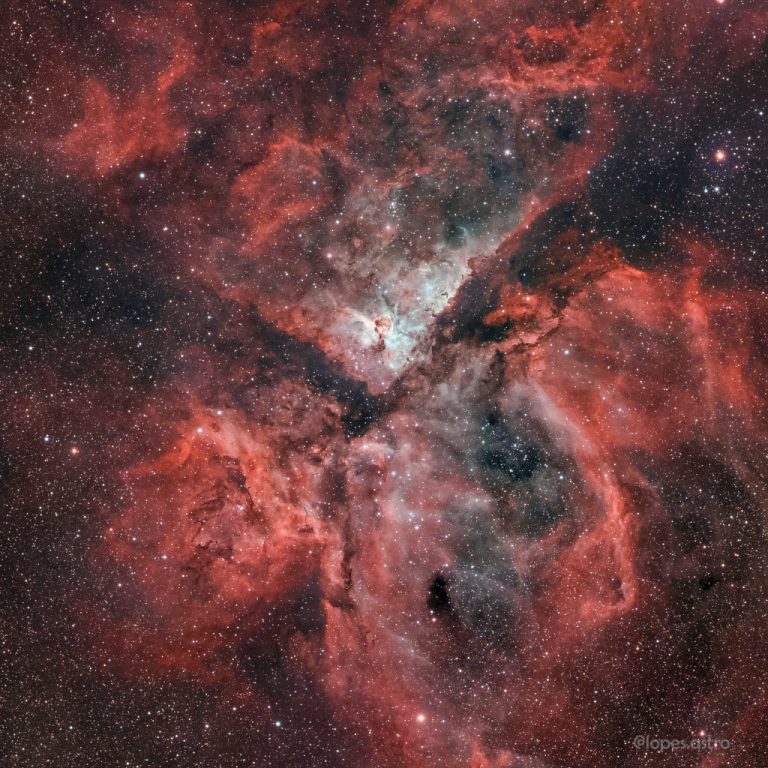
请参阅说明。单击图片将下载可用的最高分辨率版本。

2024年2月5日 In the Core of the Carina Nebula Image Credit & Copyright: Carlos Taylor Explanation: What’s happening in the core of the Carina Nebula? Stars are forming, dying, and leaving an impressive tapestry of dark dusty filaments. The entire Carina Nebula, cataloged as NGC 3372, spans over 300 light years and lies about 8,500 light-years away in the constellation of Carina. The nebula is composed predominantly of hydrogen gas, which emits the pervasive red and orange glows seen mostly in the center of this highly detailed featured image. The blue glow around the edges is created primarily by a trace amount of glowing oxygen. Young and massive stars located in the nebula’s center expel dust when they explode in supernovas. Eta Carinae, the most energetic…

2023年12月6日 Stars Versus Dust in the Carina Nebula Image Credit: NASA, ESA, Hubble Heritage (STScI/AURA); Processing: Franco Meconi (Terraza al Cosmos) Explanation: It’s stars versus dust in the Carina Nebula and the stars are winning. More precisely, the energetic light and winds from massive newly formed stars are evaporating and dispersing the dusty stellar nurseries in which they formed. Located in the Carina Nebula and inside a region known informally as Mystic Mountain, these pillars’ appearance is dominated by opaque brown dust even though it is composed mostly of clear hydrogen gas. Even though some of the dust pillars look like torches, their ends are not on fire — rather, they are illuminated by nearby stars. About 7,500 light-years distant, the featured image was taken…
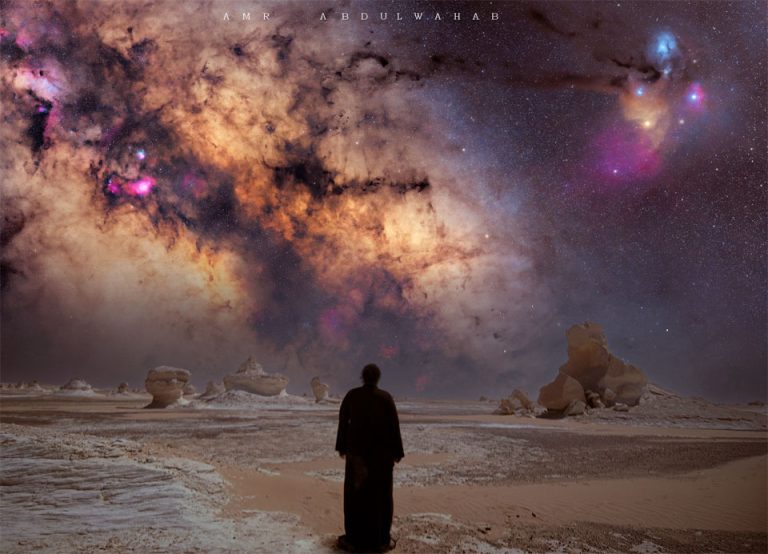
2023年5月10日 Milky Way over Egyptian Desert Image Credit & Copyright: Amr Abdelwahab Explanation: For ten years the stargazer dreamed of taking a picture like this. The dreamer knew that the White Desert National Park in Egypt‘s Western Desert is a picturesque place hosting numerous chalk formations sculpted into surreal structures by a sandy wind. The dreamer knew that the sky above could be impressively dark on a clear moonless night, showing highlights such as the central band of our Milky Way Galaxy in impressive color and detail. So the dreamer invited an even more experienced astrophotographer to spend three weeks together in the desert and plan the composite images that needed to be taken and processed to create the dream image. Over three days in…
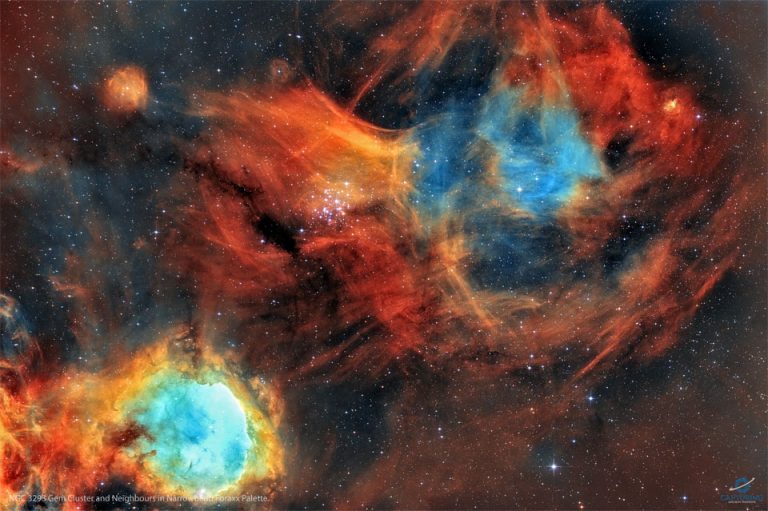
2023年5月1日 Carina Nebula North Image Credit & Copyright: Carlos Taylor Explanation: The Great Carina Nebula is home to strange stars and iconic nebulas. Named for its home constellation, the huge star-forming region is larger and brighter than the Great Orion Nebula but less well known because it is so far south — and because so much of humanity lives so far north. The featured image shows in great detail the northernmost part of the Carina Nebula. On the bottom left is the Gabriela Mistral Nebula consisting of an emission nebula of glowing gas (IC 2599) surrounding the small open cluster of stars (NGC 3324). Above the image center is the larger star cluster NGC 3293, while to its right is the emission nebula Loden 153….
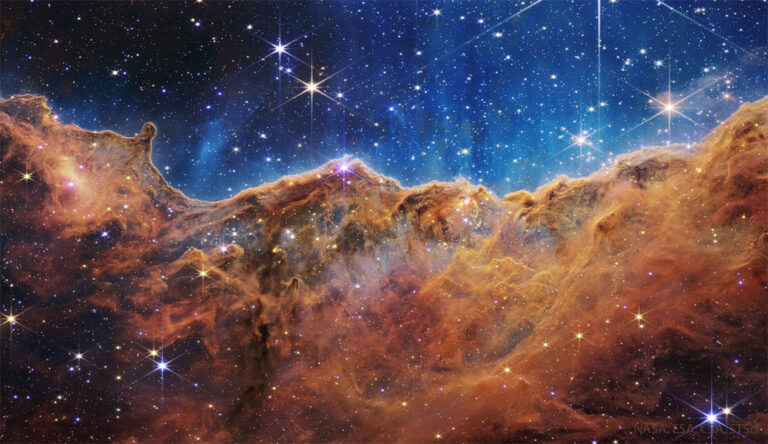
2022年9月5日 Carina Cliffs from the Webb Space Telescope Image Credit: NASA, ESA, CSA, STScI Explanation: Stars created these cliffs. Specifically, the destructive winds and energetic light from the stars in the open cluster NGC 3324 eroded away part of a mountain of dark interstellar dust in the northern part of the Carina Nebula. Several of these stars are visible toward the top of this highly detailed image taken recently by the James Webb Space Telescope, the largest astronomical telescope ever launched. Webb’s large mirror and ability to see dust-piercing infrared light has enabled it to capture fascinating details in the dust, hundreds of previously hidden stars, and even some galaxies far in the distance. The featured jagged cliffs occur in part of Carina known as…
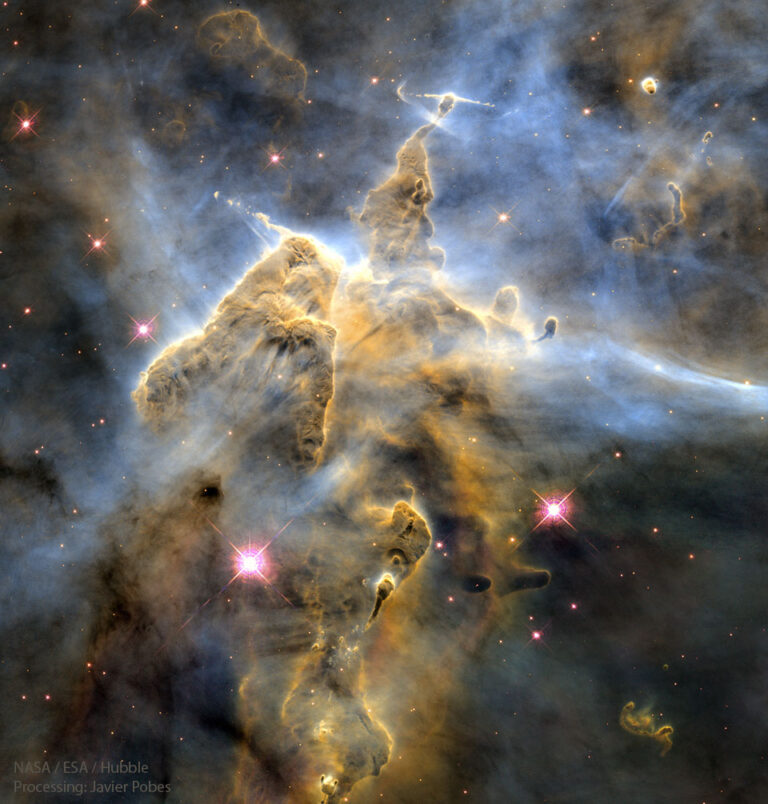
2022年8月1日 Mountains of Dust in the Carina Nebula Image Credit: NASA, ESA, Hubble; Proccessing: Javier Pobes Explanation: It’s stars versus dust in the Carina Nebula and the stars are winning. More precisely, the energetic light and winds from massive newly formed stars are evaporating and dispersing the dusty stellar nurseries in which they formed. Located in the Carina Nebula and known informally as Mystic Mountain, these pillar’s appearance is dominated by the dark dust even though it is composed mostly of clear hydrogen gas. Dust pillars such as these are actually much thinner than air and only appear as mountains due to relatively small amounts of opaque interstellar dust. About 7,500 light-years distant, the featured image was taken with the Hubble Space Telescope and highlights…
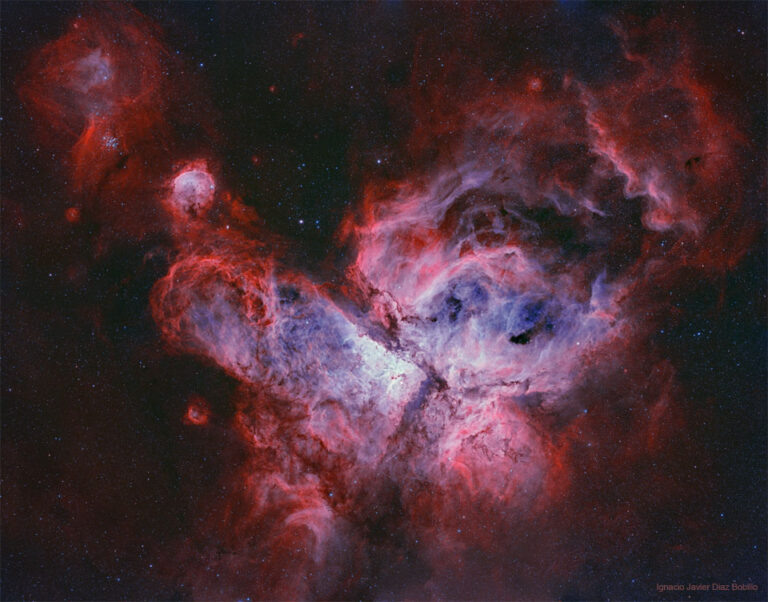
2022年4月25日 The Great Nebula in Carina Image Credit & Copyright: Ignacio Javier Diaz Bobillo Explanation: In one of the brightest parts of Milky Way lies a nebula where some of the oddest things occur. NGC 3372, known as the Great Nebula in Carina, is home to massive stars and changing nebulas. The Keyhole Nebula (NGC 3324), the bright structure just below the image center, houses several of these massive stars. The entire Carina Nebula, captured here, spans over 300 light years and lies about 7,500 light-years away in the constellation of Carina. Eta Carinae, the most energetic star in the nebula, was one of the brightest stars in the sky in the 1830s, but then faded dramatically. While Eta Carinae itself maybe on the verge…
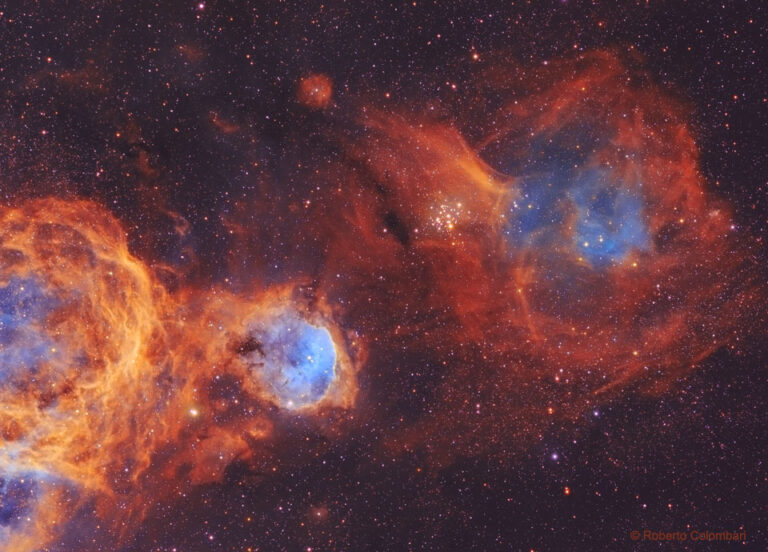
2022年1月31日 Carina Nebula North Image Credit & Copyright: Roberto Colombari Explanation: The Great Carina Nebula is home to strange stars and iconic nebulas. Named for its home constellation, the huge star-forming region is larger and brighter than the Great Orion Nebula but less well known because it is so far south — and because so much of humanity lives so far north. The featured image shows in great detail the northern-most part of the Carina Nebula. Visible nebulas include the semi-circular filaments surrounding the active star Wolf-Rayet 23 (WR23) on the far left. Just left of center is the Gabriela Mistral Nebula consisting of an emission nebula of glowing gas (IC 2599) surrounding the small open cluster of stars (NGC 3324). Above the image center…
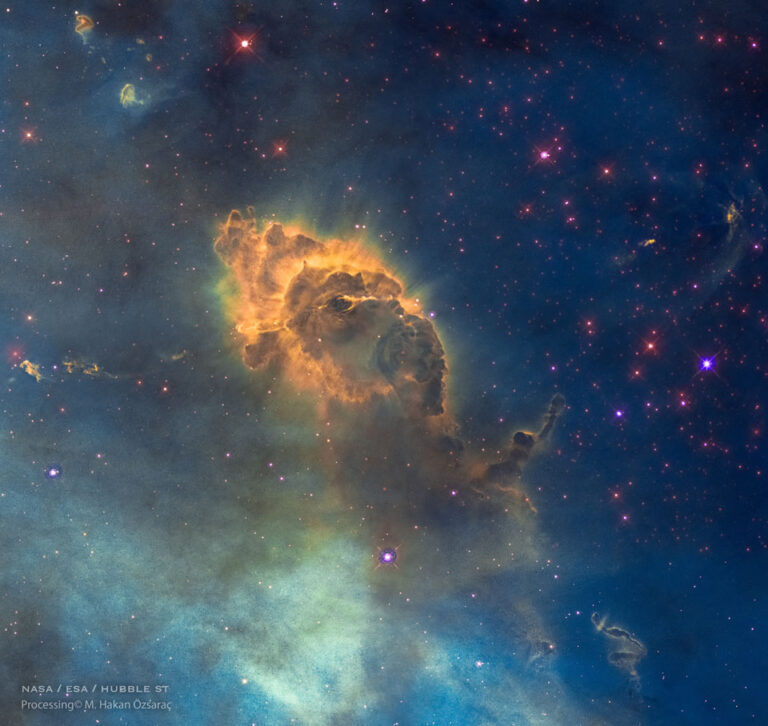
2021年12月14日 HH 666: Carina Dust Pillar with Jet Image Credit: NASA, ESA, Hubble; Processing & Copyright: Mehmet Hakan Özsaraç Explanation: To some, it may look like a beehive. In reality, the featured image from the Hubble Space Telescope captures a cosmic pillar of dust, over two-light years long, inside of which is Herbig-Haro 666 — a young star emitting powerful jets. The structure lies within one of our galaxy’s largest star forming regions, the Carina Nebula, shining in southern skies at a distance of about 7,500 light-years. The pillar’s layered outline are shaped by the winds and radiation of Carina’s young, hot, massive stars, some of which are still forming inside the nebula. A dust-penetrating view in infrared light better shows the two, narrow, energetic…